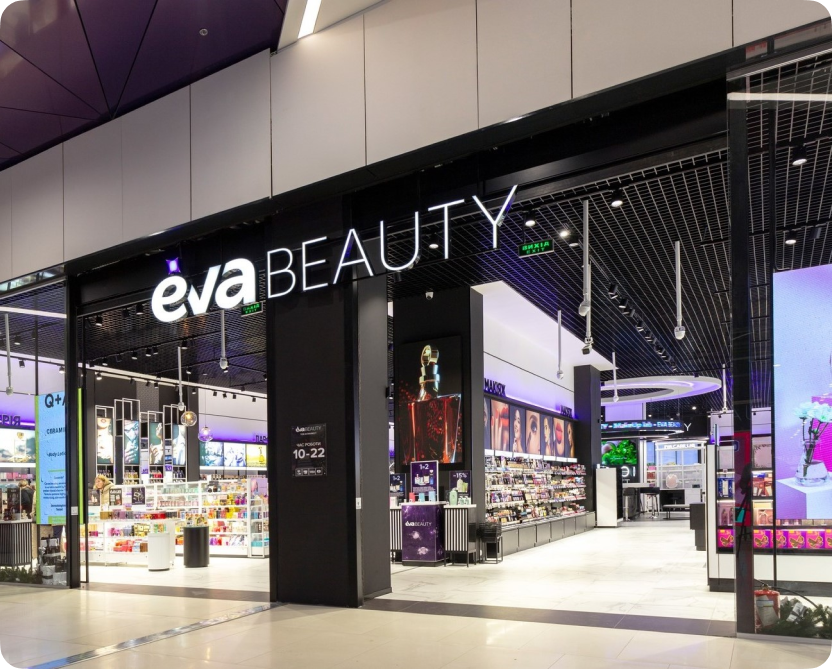Insights lacking, costs skyrocketing, and market trends changing too fast… We turn these challenges into optimized waste, increased margins, and delighted customers for retailers and e-commerce brands around the world with AI-powered retail analytics solutions!


Key AI impact metrics in retail
- Revenue per customer
Identify profitable segments, focus on actionable strategies, and increase average basket size with demand forecasts and real-time offer management elevated by AI-powered precision.
- Inventory turnover ratio
Forget about chaotic inventories! Predictive retail analytics solutions bring balance to stock levels and holding costs by allowing retailers to anticipate trends and prevent overstocking or shortages.
- Customer satisfaction score
Stay two steps ahead for increased loyalty and lifetime value. Retail data analytics solutions help businesses monitor every interaction point, predict churn, and make personalized offers just in time.
Complex data + AI = clear action plan.
Ready to lead the market with this simple formula?
Smart AI solutions for retail & online stores
Whether for flagship stores or global e-commerce, we build effective AI solutions that work in real-world conditions.

Personalized Shopping Experiences
Love from the first click! Try real-time recommendations to keep customers engaged all the way through to checkout.

Inventory & Supply Chain Optimization
Lean operations, lower costs. We make it possible with AI demand forecasts and automated replenishment.

AR Shopping & Virtual Try-On
Let customers try before they buy – with augmented reality! A way to improve the customer experience and reduce returns.

AI Visual Search & Product Recognition
Computer vision models allow instant product identification and faster path-to-purchase on any device.
Core features of retail AI & analytics
Our experts build advanced retail analytics solutions that combine multiple data streams into one reliable source of truth.
Retail AI Foundation
Secure data collection pipelines and model training routines ensure every prediction is backed by clean, high-quality data.
Lifecycle Pricing Optimization
Dynamic algorithms react to market shifts and competitor actions, helping you capture maximum margin without manual re-pricing.
Deep Consumer Insights
Looking for retail marketing analytics solutions that actually convert rather than simply wasting budget? We help companies reveal true purchase drivers with cross-channel tracking.
Inventory Planning & Forecasting
Whether per SKU or per location, retail predictive analytics solutions enable optimal stock levels to be calculated in seconds for significantly lower carrying costs.
Assortment & Space Optimization
Align product mix and shelf placement with local demand to lift sales and improve store flow.
Unified Data Hub
A single environment for business analytics and business intelligence solutions in retail, integrating POS, CRM, loyalty, and third-party data.
Data Science UA retail & e-commerce solutions

Customer Behavior Analytics
Reveal another level of customer insights by taking a closer look at how customers move, browse, and buy across channels. Extract valuable data in seconds and fine-tune what matters: from optimized marketing spend to polished in-store layout.

Demand Forecasting
Make sales predictions work not just on paper. AI models allow taking seasonality, local events, and macro trends into account to bring company’s forecasts to the next level.

Supply Chain Analytics & Planning
Shorter delivery times already sound like a dream but with retail analytics services companies are also able to improve logistics and lower shipping costs through precise real-time monitoring.

Marketing Data Analytics
It’s time to finally start allocating budgets with confidence! Evaluate campaign ROI across channels and identify high-value audiences with marketing data analytics solutions retail companies around the world already find irreplaceable.

Retail Merchandising Analytics Solutions
Access granular insights even at store level to optimize product placement and set up promotions that sell.

Retail E-Commerce Analytics Services
Track funnel performance, reduce cart abandonment, and personalize offers for higher conversion.
Why choose us for retail analytics
With 9+ years of retail analytics services delivery worldwide, Data Science UA combines technical excellence with a business-first mindset.
Deep AI Expertise
- Broad skill set: all about covering key domains, whether it’s predictive retail analytics or retail merchandising analytics solutions.
- Proven track record: from creative to critical fields – we’ve got 200+ AI projects delivered worldwide.
Custom Development
- Tailored design: no matter KPIs and infrastructure, our retail data analytics solutions are fully aligned with companies’ needs.
- Flexible engagement: meeting ongoing needs with full-cycle development or dedicated stuff augmentation.
Integration & Scalability
- Seamless connection: using API-driven approach to enable easy integration with CRM, ERP, and POS systems.
- Enterprise scale: when daily transactions are counted in millions, performance optimization is our top priority.
Advanced Technology Stack
- State-of-the-art tools: production-ready solutions built with carefully picked technology, from computer vision to cloud-native pipelines.
- Security first: we make sure to meet retail compliance requirements through high-grade encryption and access control.
Business Impact Focus
- Measurable ROI: maintenance costs reduced, operational efficiency raised – retail analytics solutions make a measurable difference.
- Faster time to value: close collaboration and orchestrated workflow for MVPs delivered in weeks, not quarters.
Continuous Support
- Ongoing optimization: regular updates keep models accurate as markets evolve.
- Staff training options: we educate your team to manage, monitor, and expand every AI asset.

Competitive edge starts with intelligent analytics. We don’t just show how analytics solutions for retail industry can reshape your margins and customer loyalty – we make it a reality.
Why choose us for retail analytics
With 9+ years of retail analytics services delivery worldwide, Data Science UA combines technical excellence with a business-first mindset.
Deep AI Expertise
- Broad skill set: all about covering key domains, whether it’s predictive retail analytics or retail merchandising analytics solutions.
- Proven track record: from creative to critical fields – we’ve got 200+ AI projects delivered worldwide.
Custom Development
- Tailored design: no matter KPIs and infrastructure, our retail data analytics solutions are fully aligned with companies’ needs.
- Flexible engagement: meeting ongoing needs with full-cycle development or dedicated stuff augmentation.
Integration & Scalability
- Seamless connection: using API-driven approach to enable easy integration with CRM, ERP, and POS systems.
- Enterprise scale: when daily transactions are counted in millions, performance optimization is our top priority.
Advanced Technology Stack
- State-of-the-art tools: production-ready solutions built with carefully picked technology.
- Security first: we make sure to meet retail compliance requirements through high-grade encryption and access control.
Business Impact Focus
- Measurable ROI: maintenance costs reduced, operational efficiency raised – retail analytics solutions make a measurable difference.
- Faster time to value: close collaboration and orchestrated workflow for MVPs delivered in weeks, not quarters.
Continuous Support
- Ongoing optimization: regular updates keep models accurate as markets evolve.
- Staff training options: we educate your team to manage, monitor, and expand every AI asset.
Competitive edge starts with intelligent analytics. We don’t just show how analytics solutions for retail industry can reshape your margins and customer loyalty – we make it a reality.
Turn data into profit while competitors stall!
We offer retail data analytics solutions for brands and retailers aligned with your exact business needs
Technology we work with
Our AI engineers apply the latest frameworks and models proven in projects for critical industries like manufacturing and fintech.
Case Studies
Online and offline stores ready to win over customers’ hearts with the power of AI – here’s how we applied technology to solve challenges retailers face daily:


Luxury fashion retailer representing global brands
Built a unified Master Data system complete with a business intelligence system for data-driven decisions that boost customer satisfaction and drive sales growth.


Retail pioneer in health and beauty products
We developed a recommender engine that boosted average basket size by 0.4 items and reduced customer churn from 20% to 15%.


A platform for analysis and strategic insights extraction
Improved the system by moving it to AWS managed services, reduced costs by over 20%, and designed features focusing on user needs for future updates.
What our clients say:


High quality, authority, responsibility.
Thorough approach, attentiveness to details and requirements, high speed of search, and quality of the candidates. During our collaboration, we’ve widened our DS team with 5 new employees with the company’s active assistance.


We think that they have the best pool of AI talents in Ukraine.
Data Science UA helped us to attract highly qualified talents. We ask for help in closing positions in Machine Learning and AI directions. With the help of this company we hired around 10 AI Specialists.


Their recruiting standards are definitely worth mentioning.
Quick feedback and flexibility to meet our point of view. They show a high level of professionalism in their processes and communications. We are happy with the team members their team has found for us.
Other industries
FAQ
How does AI detect and prevent fraud in retail?
Historical patterns and anomaly detection become a foundation for artificial intelligence models that monitor transactions and flag suspicious activity in real time. This type of technology brings next-level protection to payment systems and loyalty programs without slowing down checkout.
How do you integrate AI into retail operations?
To make integration processes smooth and disruption-free, the Data Science UA team focuses on applying an API-driven approach. POS, CRM, and inventory systems are connected directly, following a step-by-step deployment strategy. This way, we start with pilot models and gradually scale to a full retail analytics platform with no negative effect for daily sales.
How does AI improve price optimization?
Competitor pricing, demand elasticity, and seasonality – important factors every retailer knows about. Yet, just knowing is not enough if leaving competitors behind is the true goal. Machine learning algorithms analyze these factors at another level of complexity. This allows to reveal hidden patterns and further automate adjustments to keep prices competitive while maximizing profit margins across every product and location.









